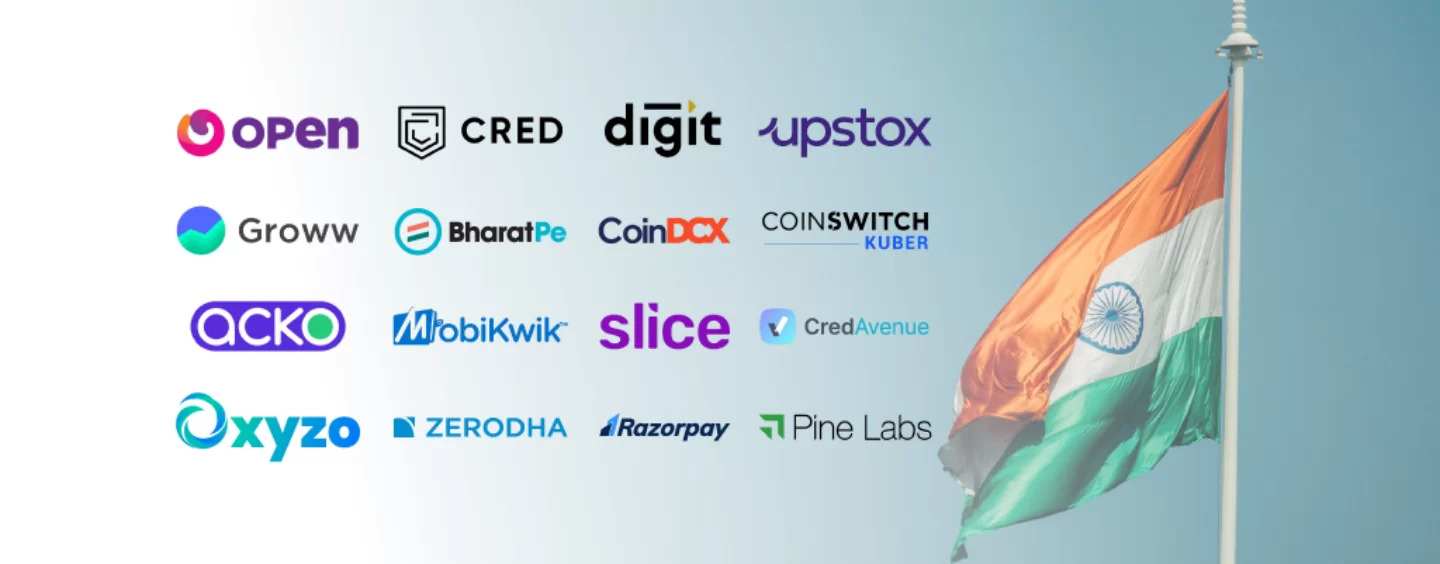Introduction
Health insurance is an essential component of our financial planning, helping us mitigate the high costs of medical treatments. While traditional health insurance requires policyholders to pay for medical expenses upfront and later seek reimbursement, cashless claims offer a convenient alternative. In a cashless claim, the insured can receive medical treatment without making any payment at the time of hospitalization.
Cashless claims have gained popularity in recent years due to their simplicity and convenience. With a cashless claim, policyholders can focus on receiving the necessary healthcare services without worrying about immediate financial burdens. This process not only provides peace of mind but also ensures timely access to quality medical care when it is most needed.
In this guide, we will delve into the concept of cashless claims in health insurance, explaining how they work, their advantages, the process involved, and the necessary documentation. So, whether you are a first-time policyholder or simply seeking a better understanding of the cashless claim facility, read on to learn more about this valuable aspect of health insurance.
What is a Cashless Claim?
A cashless claim is a facility provided by health insurance companies that allows policyholders to receive medical treatment at empaneled hospitals without making any upfront payment. Under this arrangement, the insurance provider settles the medical expenses directly with the hospital, subject to the policy’s terms and conditions.
When availing a cashless claim, policyholders present their health insurance card at the empaneled hospital’s desk or reception. The hospital verifies the policy details and subsequently initiates the pre-authorization process with the insurance company. Once the insurance company approves the request, the policyholder can receive the necessary healthcare services without having to pay for them upfront.
Cashless claims are typically available within the network of hospitals and healthcare providers affiliated with the insurance company. These network hospitals have a tie-up with the insurance company, which means they have agreed to provide cashless claims to policyholders of that particular insurance provider.
It is important to note that cashless claims cover only those medical expenses that fall under the policy’s terms and conditions. Each insurance policy has its own set of inclusions, exclusions, and limits, so it is crucial to review the policy documents or consult with the insurance provider to understand the coverage specifics.
In summary, a cashless claim is a convenient facility offered by health insurance providers, allowing policyholders to receive medical treatment without making upfront payments. By leveraging this facility, policyholders can alleviate the financial burden associated with medical expenses while ensuring timely access to essential healthcare services.
How Does Cashless Claim Work?
The cashless claim process involves a series of steps that policyholders need to follow to avail themselves of the benefits. Let’s take a closer look at how cashless claims work:
- Hospital Selection: To avail a cashless claim, policyholders need to choose a hospital from the insurance company’s network of empaneled hospitals. This ensures that the hospital is authorized to provide cashless claim services.
- Intimation to the Insurance Company: Once the hospital is selected, the policyholder needs to inform the insurance company about the planned hospitalization. This can be done by calling the customer service helpline or using the mobile app or online portal provided by the insurance company.
- Submission of Documents: The policyholder is required to submit certain documents to the hospital for verification. These documents typically include the health insurance card, policy documents, and any additional documents requested by the hospital or insurance provider.
- Pre-Authorization Process: The hospital initiates the pre-authorization process with the insurance company. This involves submitting a request for approval of the estimated treatment expenses. The insurance company assesses the request based on the policy terms and conditions.
- Approval and Treatment: If the insurance company approves the request, the policyholder can proceed with the medical treatment without making any upfront payment. The insurance company directly settles the eligible expenses with the hospital. However, if the request is not approved, the policyholder may need to explore alternative options.
- Claim Settlement: Once the treatment is completed, the hospital provides the policyholder with the necessary discharge documents. These documents, along with any invoices or medical reports, should be submitted to the insurance company within the stipulated timeframe to initiate the claim settlement process.
It is essential to be aware of the specific guidelines and requirements outlined by the insurance company to ensure a smooth cashless claim process. Familiarizing oneself with the policy terms, network hospitals, and required documents can help policyholders navigate the process more efficiently.
By understanding how cashless claims work, policyholders can make informed decisions and save themselves from the hassle of arranging immediate funds for medical treatment. This facility not only simplifies the reimbursement process but also ensures quicker access to healthcare services when the need arises.
Cashless Claim vs. Reimbursement Claim
When it comes to health insurance, there are two primary types of claims: cashless claims and reimbursement claims. Let’s explore the key differences between these two types:
Cashless Claim:
In a cashless claim, policyholders can receive medical treatment without making any upfront payments. The insurance company directly settles the eligible medical expenses with the empaneled hospital. The policyholder only needs to pay for any non-covered or excess expenses as per the policy terms. The cashless claim facility is available within the network of hospitals associated with the insurance company. This enables policyholders to receive timely medical care without worrying about immediate financial burdens, as the insurance company handles the payment process.
Reimbursement Claim:
In a reimbursement claim, policyholders need to pay for the medical expenses upfront and later seek reimbursement from the insurance company. After receiving the necessary medical treatment, the policyholder collects all the relevant medical bills, documents, and reports and submits them to the insurance company for evaluation. The insurance company assesses the claim and reimburses the policyholder for the eligible expenses as per the policy terms. Unlike cashless claims, reimbursement claims require policyholders to bear the initial financial burden and go through the process of submitting and verifying documents for reimbursement.
Now, let’s compare cashless claims and reimbursement claims based on a few key factors:
- Payment Process: In a cashless claim, the insurance company directly settles the medical expenses with the hospital, eliminating the need for upfront payment. In contrast, in a reimbursement claim, the policyholder needs to pay for the medical expenses first and then seek reimbursement from the insurance company.
- Hospital Network: Cashless claims are only available within the network of empaneled hospitals associated with the insurance company. Reimbursement claims can be made for medical treatments received at any hospital, whether it is within the network or not.
- Documentation: Cashless claims require certain documents to be submitted at the time of hospitalization for verification and approval. However, the documentation process is more extensive for reimbursement claims, as policyholders need to gather and submit all the relevant bills, documents, and reports for reimbursement.
- Financial Impact: Cashless claims provide immediate financial relief to policyholders, as they do not have to arrange funds for upfront medical expenses. Reimbursement claims, on the other hand, require policyholders to bear the initial financial burden and wait for the reimbursement process to be completed.
Each type of claim has its own advantages and considerations. Policyholders should review their respective health insurance policies and assess their individual needs to determine which claim type suits them best.
Advantages of Cashless Claims
Cashless claims offer several benefits to policyholders, making them a popular choice among health insurance policyholders. Let’s explore some of the key advantages of cashless claims:
- Convenience: One of the primary advantages of cashless claims is the convenience they offer. Policyholders do not have to arrange immediate funds to pay for medical expenses at the time of hospitalization. They can receive medical treatment without any upfront payment, allowing them to focus on their health and well-being.
- Timely Access to Healthcare: Cashless claims ensure timely access to healthcare services. Policyholders can seek medical treatment at empaneled hospitals without any financial hurdles, avoiding delays that may occur when arranging funds for upfront payments. This is crucial in emergency situations when quick medical attention is required.
- Reduced Financial Burden: Cashless claims alleviate the financial burden associated with medical expenses. Policyholders do not have to bear the initial financial burden and can receive essential medical care without worrying about immediate payment arrangements. This can significantly ease the financial strain on individuals and families during times of medical need.
- Transparent Process: Cashless claims involve a transparent process where policyholders can easily track and monitor their medical expenses. The insurance company provides a detailed breakdown of the approved expenses, allowing policyholders to understand the coverage provided by their health insurance policy.
- Eliminates Reimbursement Hassles: Unlike reimbursement claims, cashless claims eliminate the need for policyholders to go through the hassle of submitting and verifying documents for reimbursement. The insurance company directly settles the eligible medical expenses with the hospital, saving policyholders from the reimbursement process.
- Access to Network Hospitals: Cashless claims can only be availed at empaneled hospitals within the insurance company’s network. This ensures that policyholders have access to quality healthcare facilities and services. Network hospitals are selected based on their infrastructure, reputation, and ability to provide cashless services.
The advantages of cashless claims make them an attractive option for individuals and families seeking efficient and hassle-free healthcare financing. By leveraging this facility, policyholders can focus on their health and well-being without having to worry about immediate financial arrangements during medical emergencies or planned hospitalizations.
How to Avail Cashless Claim Facility?
Availing the cashless claim facility in health insurance requires adherence to certain steps and procedures. To ensure a smooth and hassle-free process, follow these guidelines:
- Select Network Hospitals: The first step is to identify the network hospitals associated with your health insurance provider. Review the list of empaneled hospitals available on the insurance company’s website or contact their customer service helpline for the most updated information.
- Inform the Insurance Company: Before admission to the hospital, it is essential to inform your health insurance provider about the planned hospitalization. This can be done by contacting the insurance company’s customer service helpline or using their mobile app or online portal to register the request.
- Submit the Required Documents: As part of the cashless claim process, you will need to submit certain documents to the hospital. This typically includes your health insurance card, identity proof, policy documents, and any additional documents required by the hospital or insurance provider.
- Initiate the Pre-Authorization Process: After you are admitted to the hospital, the medical team or hospital administration will initiate the pre-authorization process. They will send a request to the insurance company for approval of the estimated treatment expenses.
- Cooperate with the Insurance Company: During the pre-authorization process, the insurance company may require additional information or clarification. It is important to cooperate and promptly provide any requested documents or details to ensure a smooth approval process.
- Attend Medical Treatment: Once the insurance company approves the cashless claim request, you can proceed with the required medical treatment without making any upfront payment. The insurance company will directly settle the eligible medical expenses with the hospital.
- Review and Sign the Discharge Summary: After completion of the treatment, it is important to review and sign the discharge summary provided by the hospital. Make sure all the details and expenses mentioned in the summary accurately reflect the treatment received.
- Provide Feedback: After the treatment and claim settlement, consider providing feedback to the insurance company about your experience with the cashless claim facility. Your feedback can help them improve their services and assist future policyholders.
Remember to familiarize yourself with the specific guidelines and requirements outlined by your health insurance provider. Each insurance company may have different processes and documentation requirements for availing cashless claims. By following the prescribed steps and cooperating with the insurance company and hospital, you can smoothly avail the cashless claim facility provided by your health insurance policy.
Documents Required for Cashless Claims
When availing the cashless claim facility in health insurance, policyholders are required to submit certain documents for verification and approval. These documents help ensure a smooth and transparent process. Here are the commonly required documents for cashless claims:
- Health Insurance Card: The health insurance card or policy document is an essential document that policyholders must carry to the hospital. It contains important details such as the policyholder’s name, policy number, and contact information, which are necessary for verification.
- Identity Proof: Policyholders are typically required to provide a valid identity proof, such as a government-issued ID card (e.g., Aadhaar card, passport, driver’s license). This helps verify the policyholder’s identity at the time of hospitalization.
- Policy Documents: It is important to carry the complete set of policy documents provided by the insurance company. These documents contain the terms and conditions, inclusions, exclusions, and coverage details of the health insurance policy.
- Claim Form: The insurance company usually provides a claim form that needs to be filled and submitted at the time of hospitalization. The claim form captures essential information about the policyholder, the hospitalization details, and the estimated treatment expenses.
- Medical Reports: Depending on the nature of the medical treatment, policyholders may need to provide relevant medical reports or diagnostic test results. These reports help the insurance company assess the claim and approve the cashless facility accordingly.
- Discharge Summary: After completion of the treatment, the hospital provides a discharge summary, which includes details of the treatment received, medications prescribed, and any post-discharge instructions. This summary serves as proof of the medical expenses incurred.
- Other Supporting Documents: Some insurance companies may request additional documents, such as the treating doctor’s prescription, invoices for consumables or implants, or any other documents specific to the treatment or claim. It is important to inquire about such requirements beforehand.
It is advisable to keep copies of all the submitted documents for future reference. By ensuring that all the required documents are in order and readily available, policyholders can expedite the cashless claim process and avoid any unnecessary delays or complications.
Cashless Claim Process Explained
The cashless claim process in health insurance involves a series of steps that policyholders need to follow to avail themselves of the facility. Here is a detailed explanation of the cashless claim process:
- Hospital Selection: Policyholders need to choose a hospital from the insurance company’s network of empaneled hospitals. This ensures that the hospital is authorized to provide cashless claim services.
- Intimation to the Insurance Company: Before admission to the hospital, policyholders need to inform the insurance company about the planned hospitalization. This can be done by calling the insurance company’s customer service helpline or using their mobile app or online portal to register the request.
- Submission of Documents: At the time of hospitalization, policyholders are required to submit certain documents to the hospital for verification. These typically include the health insurance card, policy documents, identity proof, claim form, medical reports, and any additional documents specified by the insurance company or hospital.
- Pre-Authorization Process: Once the necessary documents are submitted, the hospital initiates the pre-authorization process with the insurance company. They send a request to the insurance company for approval of the estimated treatment expenses.
- Approval and Treatment: The insurance company evaluates the pre-authorization request based on the policy terms and conditions. If the request is approved, the policyholder can proceed with the required medical treatment without making any upfront payment. The insurance company directly settles the eligible expenses with the hospital.
- Claim Settlement: After the treatment is completed, the hospital provides the policyholder with the necessary discharge documents, including the discharge summary and medical bills. These documents, along with any invoices or medical reports, should be submitted to the insurance company within the stipulated timeframe to initiate the claim settlement process.
- Verification and Reimbursement: The insurance company verifies the submitted documents, ensuring they align with the policy’s terms and conditions. Once the verification is completed, the eligible medical expenses are reimbursed to the policyholder as per the policy guidelines.
It is important for policyholders to review their health insurance policy for specific instructions and guidelines related to the cashless claim process. Being familiar with the process and complying with the requirements can help policyholders navigate the cashless claim facility with ease and ensure a smooth and hassle-free experience.
Network Hospitals for Cashless Claims
Network hospitals play a vital role in the cashless claim facility offered by health insurance providers. These hospitals have a tie-up with the insurance company, allowing policyholders to avail the cashless claim facility. Here’s what you need to know about network hospitals:
Definition and Importance:
Network hospitals are healthcare facilities that have a formal agreement with the insurance company to provide cashless claim services to policyholders. These hospitals have met specific criteria set by the insurance company, such as infrastructure, quality standards, and service offerings. They have a dedicated relationship with the insurance company, providing policyholders with convenient access to quality medical care without the need for immediate payments.
Advantages of Network Hospitals:
Policyholders can enjoy several advantages when availing cashless claims at network hospitals:
- Easy Identification: Insurance companies provide a list of network hospitals either on their website or in the policy document. This makes it easier for policyholders to identify the hospitals where they can avail cashless claims. They can choose from a wide range of empaneled hospitals based on their preferences.
- Convenience and Accessibility: Network hospitals are conveniently located, ensuring easy access to quality healthcare services for policyholders. They are often well-equipped with the necessary infrastructure, medical professionals, and facilities to provide comprehensive medical treatments.
- Streamlined Process: When policyholders visit a network hospital, the cashless claim process becomes streamlined. The hospital’s administration is well-versed with the insurance company’s procedures, making it easier for policyholders to go through the necessary documentation and pre-authorization process without any hassles.
- Direct Settlement: With network hospitals, policyholders can enjoy the benefit of direct settlement of eligible medical expenses. The insurance company directly coordinates with the hospital for reimbursement and settles the payments on behalf of the policyholder, alleviating the need for upfront payments.
- Quality Assurance: Insurance companies carefully select network hospitals based on predetermined criteria. This ensures that policyholders receive quality healthcare services within the network. Network hospitals undergo regular evaluations to maintain their affiliation with the insurance company.
Find Network Hospitals:
Policyholders can find a list of network hospitals from their insurance company’s website or by contacting the customer service helpline. It is important to note that the list of network hospitals may be periodically updated, so it’s recommended to check for the most recent information before seeking medical treatment.
Choosing a network hospital for cashless claims offers policyholders numerous benefits, including convenience, accessibility, and a streamlined claim process. By leveraging the network hospitals, policyholders can receive the necessary medical care without any immediate financial burden.
Limitations of Cashless Claims
While cashless claims offer numerous advantages, it is important to understand their limitations as well. Here are some of the key limitations to consider when availing the cashless claim facility:
- Network Hospital Restriction: Cashless claims can only be availed at network hospitals affiliated with the insurance company. If policyholders choose to receive treatment at a non-network hospital, they would need to opt for reimbursement claims instead.
- Coverage Limitations: Cashless claims cover only those medical expenses that fall under the policy’s terms and conditions. Certain treatments, procedures, or medications may not be covered, leading to out-of-pocket expenses for policyholders. It is essential to review the policy documents to understand the coverage limitations.
- Excluded Services: Some specific services, such as cosmetic procedures, alternative therapies, or experimental treatments, may be excluded from cashless claims altogether. Policyholders need to be aware of these exclusions and understand which services are not eligible for cashless claims.
- Co-Payment Requirement: In certain health insurance policies, policyholders may be required to make a co-payment or bear a portion of the medical expenses themselves, even in cashless claims. This means that policyholders may still have to pay a percentage of the total treatment cost.
- Limitations on Room Category: Some policies have restrictions on the room category for cashless claims. If policyholders choose a higher category of room than the one specified in their policy, they may have to bear the additional expenses themselves.
- Pre-Authorization Process: The pre-authorization process can take time, especially in complex cases or if additional documents are required. This may cause delays in accessing medical treatment, which can be a challenge in emergency situations.
- Disputed Claims: In some cases, the insurance company may dispute a cashless claim if the treatment or expenses are deemed to be outside the policy coverage. This can lead to difficulties in claim settlement and can be a source of frustration for policyholders.
It is crucial for policyholders to thoroughly understand their health insurance policy, including the terms, limitations, and exclusions related to cashless claims. Being aware of these limitations will help policyholders make informed decisions and manage expectations when availing the cashless claim facility.
Conclusion
The cashless claim facility in health insurance offers a convenient and hassle-free way for policyholders to receive medical treatment without the need for immediate upfront payments. It ensures timely access to quality healthcare services while alleviating the financial burden associated with medical expenses. By understanding the cashless claim process and following the necessary steps, policyholders can make the most of this valuable facility.
From selecting network hospitals to informing the insurance company, submitting the required documents, and going through the pre-authorization process, each step plays a crucial role in availing cashless claims. It is important for policyholders to familiarize themselves with the specific guidelines outlined by their health insurance provider to ensure a smooth experience.
Cashless claims offer advantages such as convenience, reduced financial burden, and transparent processes. However, it is essential to also be aware of the limitations, including network hospital restrictions, coverage limitations, and the possibility of co-payment or disputed claims.
By staying informed about the coverage details, exclusions, and policy limitations, policyholders can make informed decisions about their health insurance and effectively utilize the cashless claim facility when needed. It is advisable to review the policy documents, stay updated on the list of network hospitals, and maintain open communication with the insurance company to ensure a seamless experience with cashless claims.
Overall, the cashless claim facility is a valuable aspect of health insurance, providing policyholders with peace of mind, convenience, and timely access to essential healthcare services. By leveraging this facility effectively, policyholders can navigate medical emergencies and planned hospitalizations without the added stress of immediate financial arrangements.

























